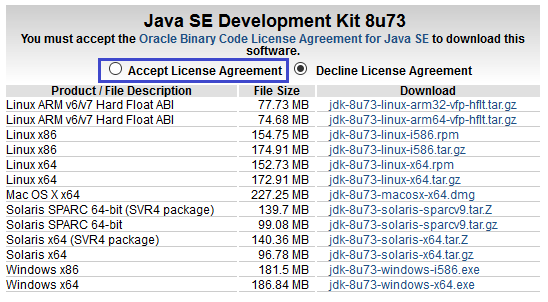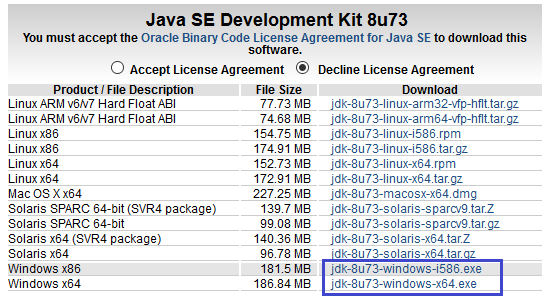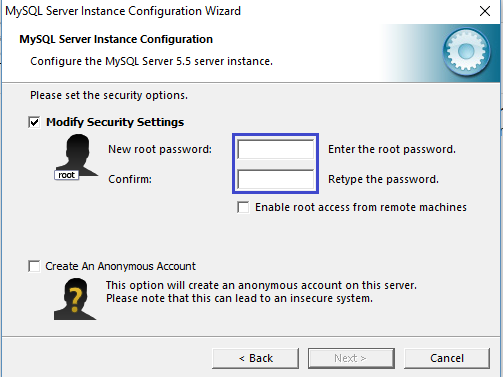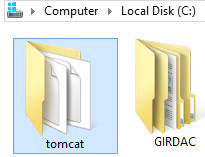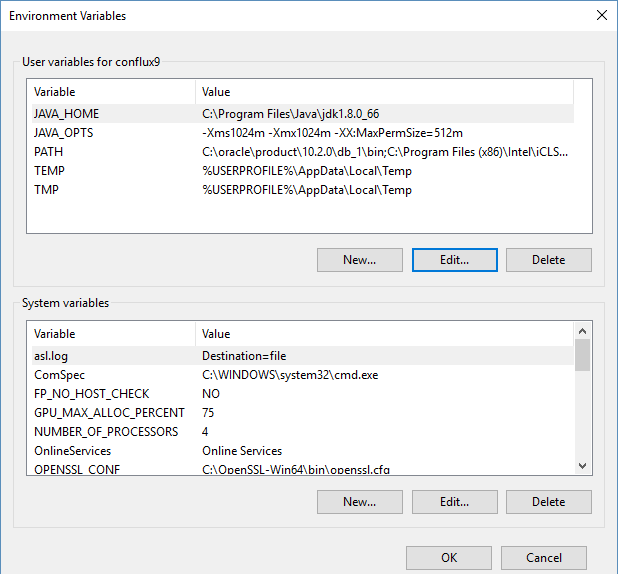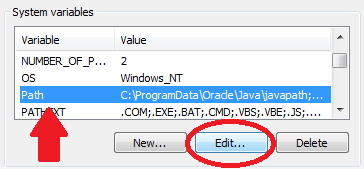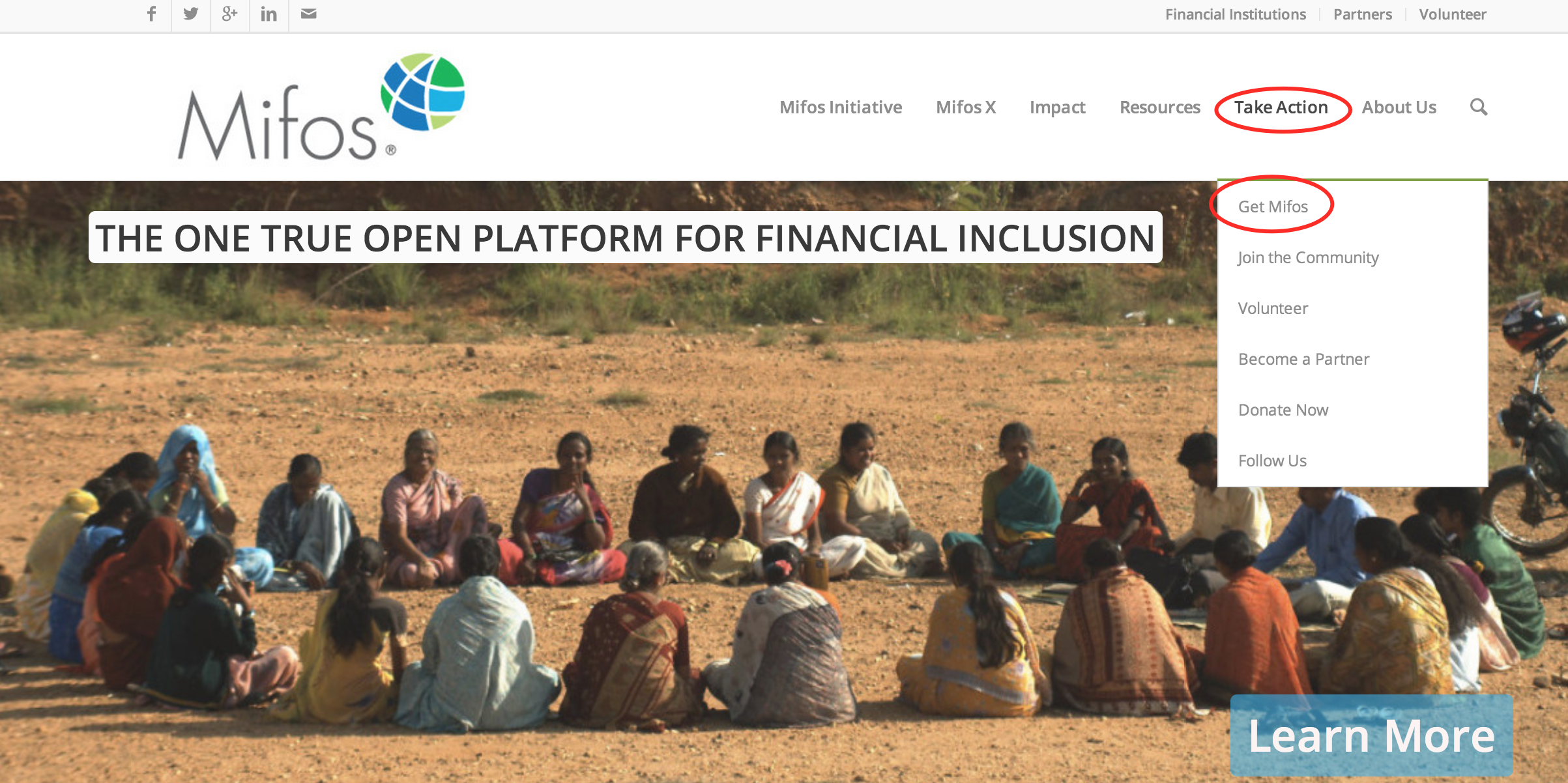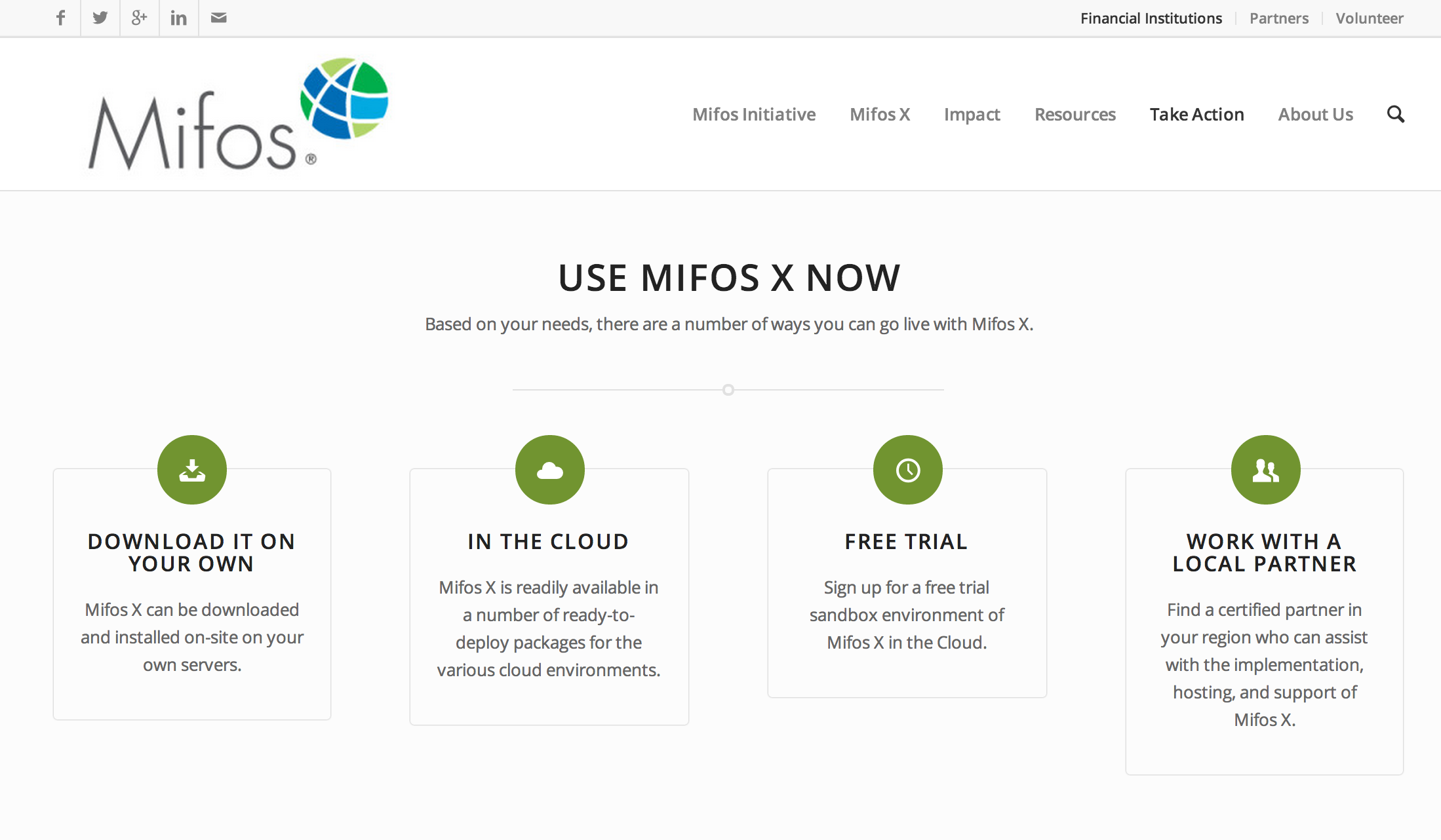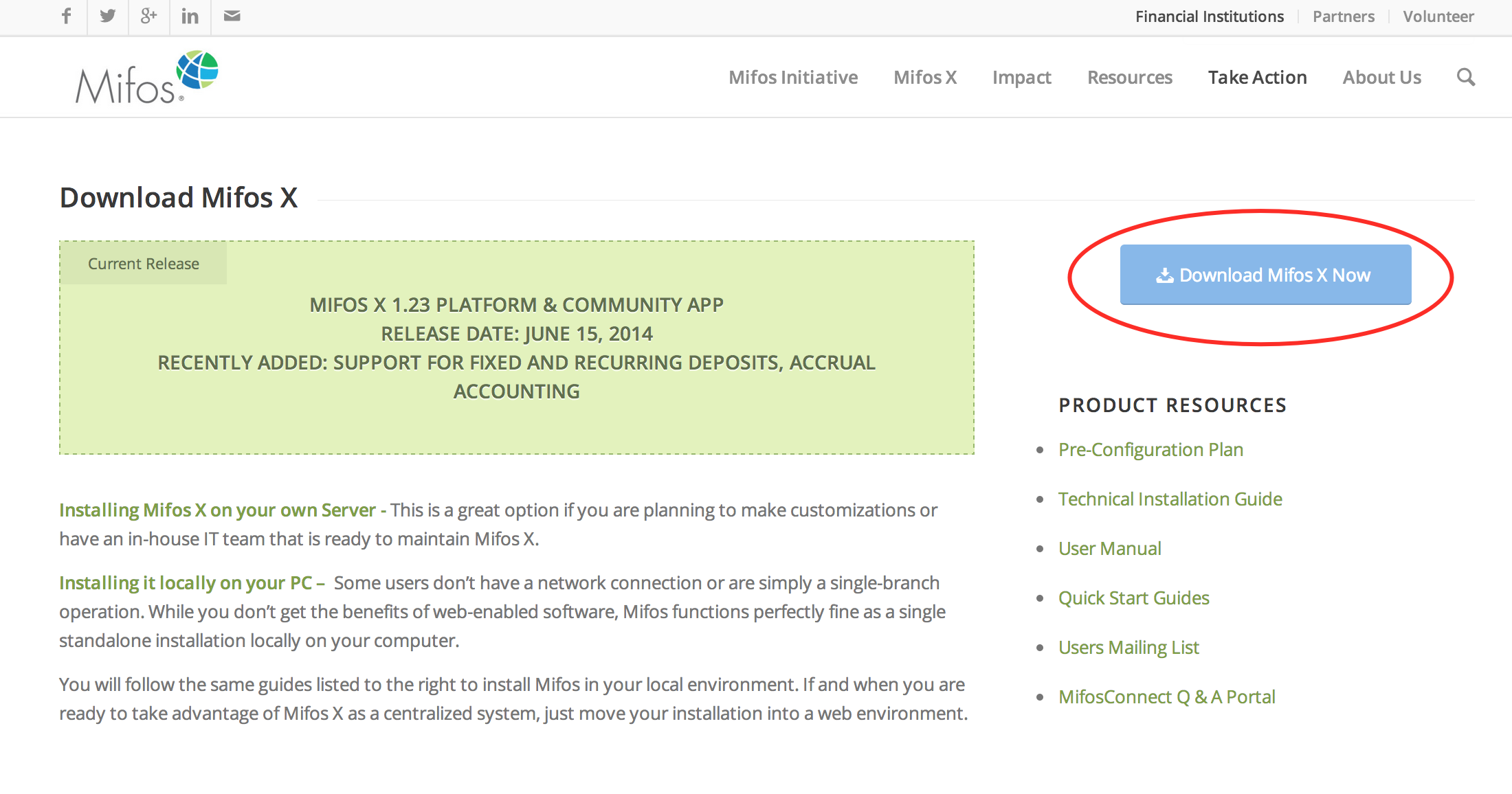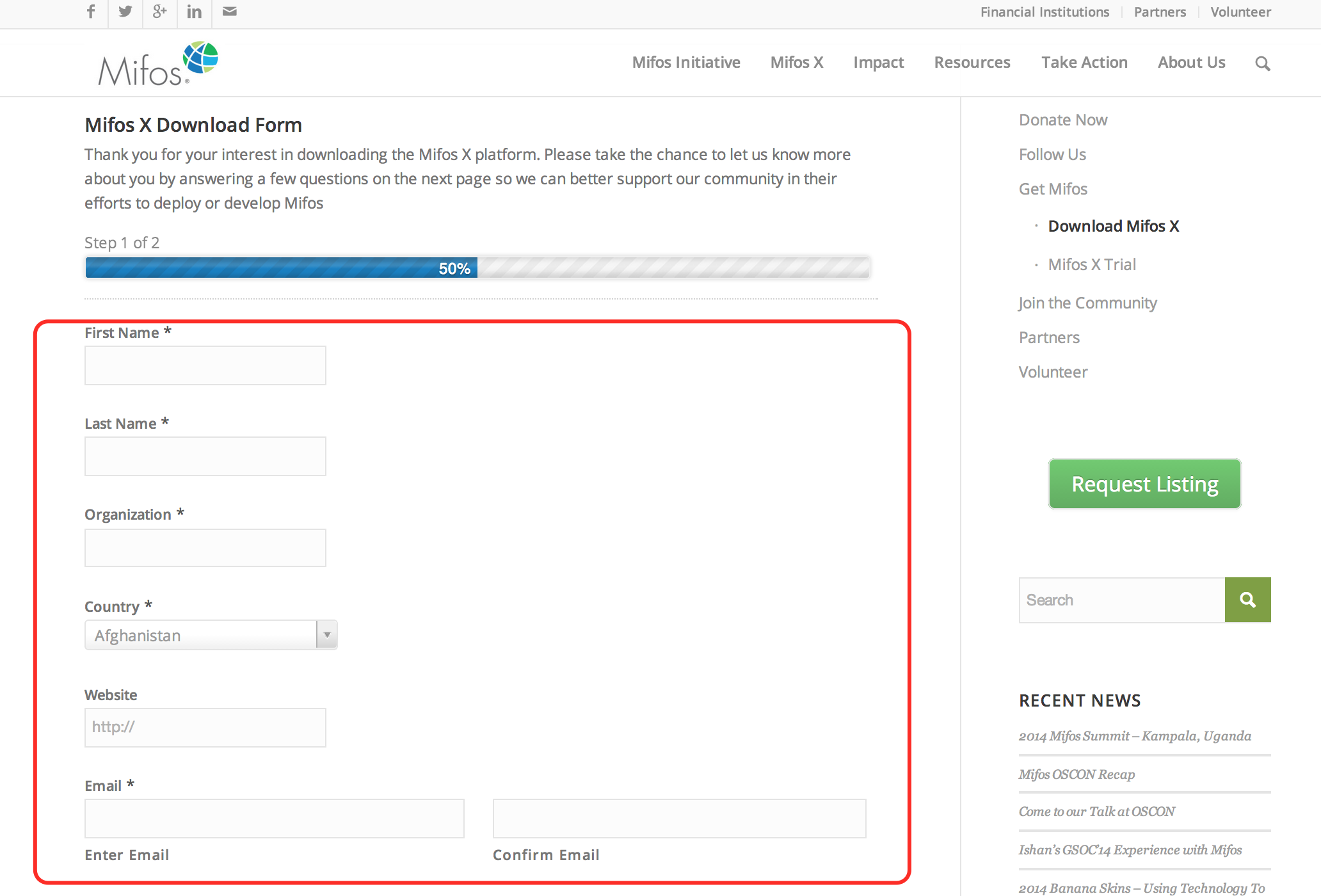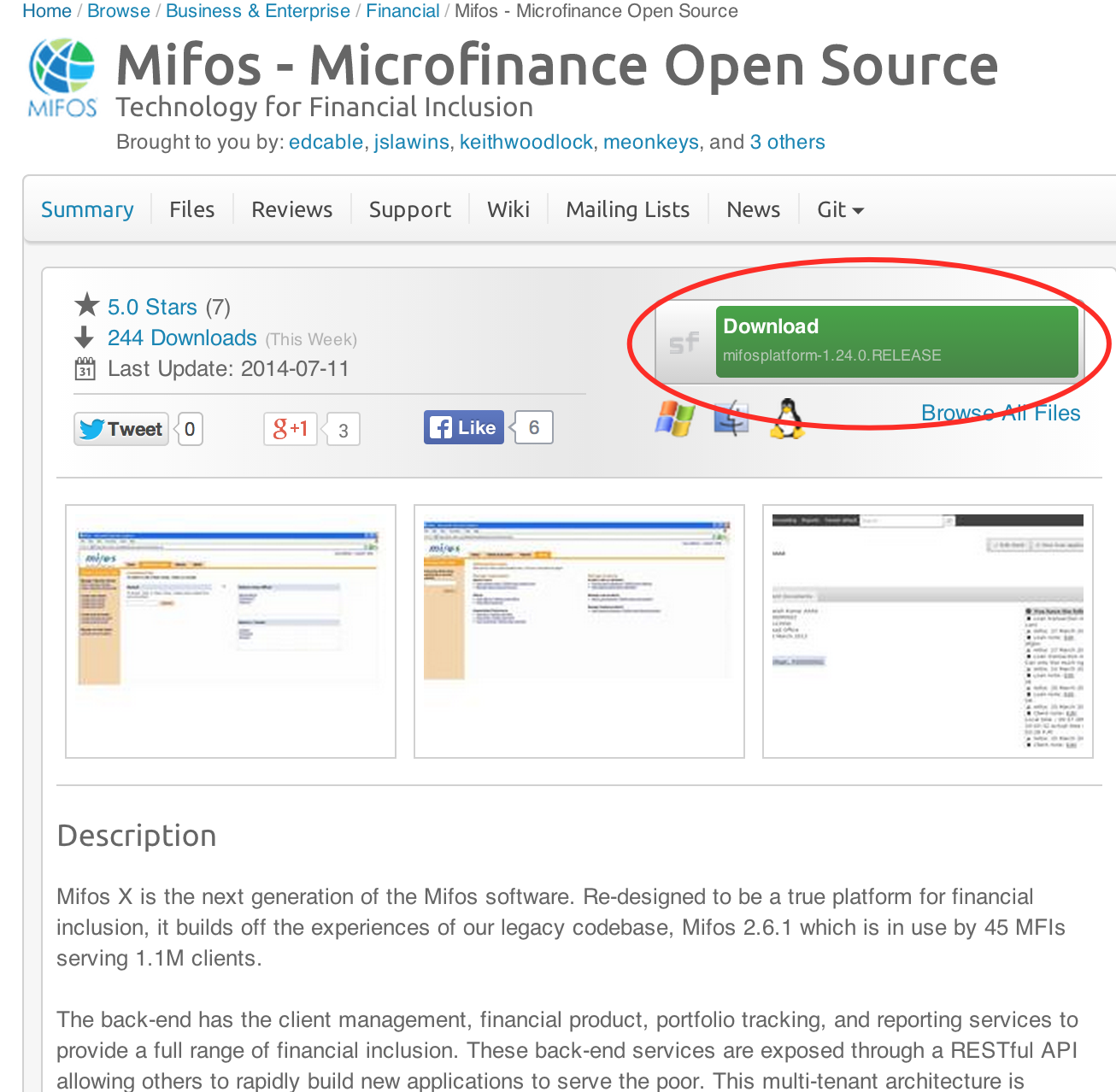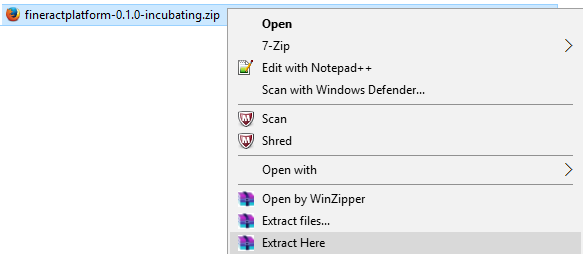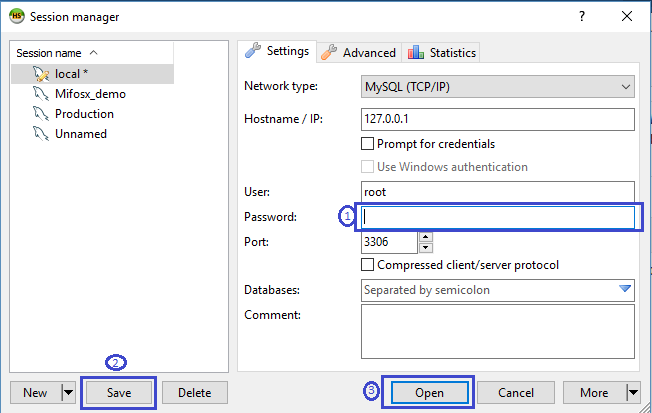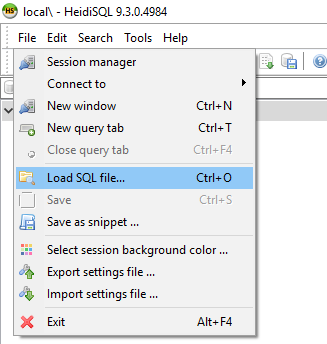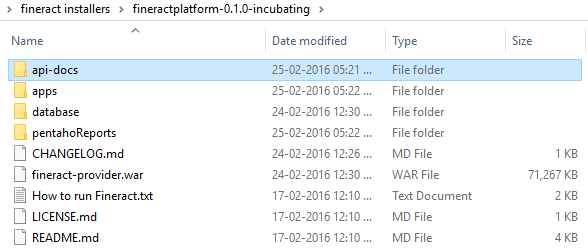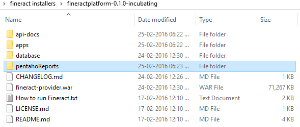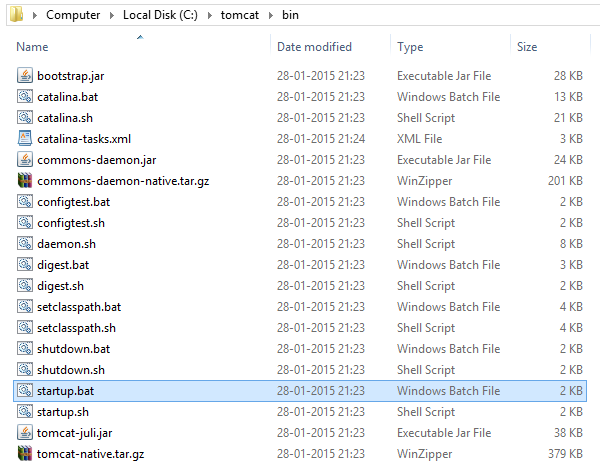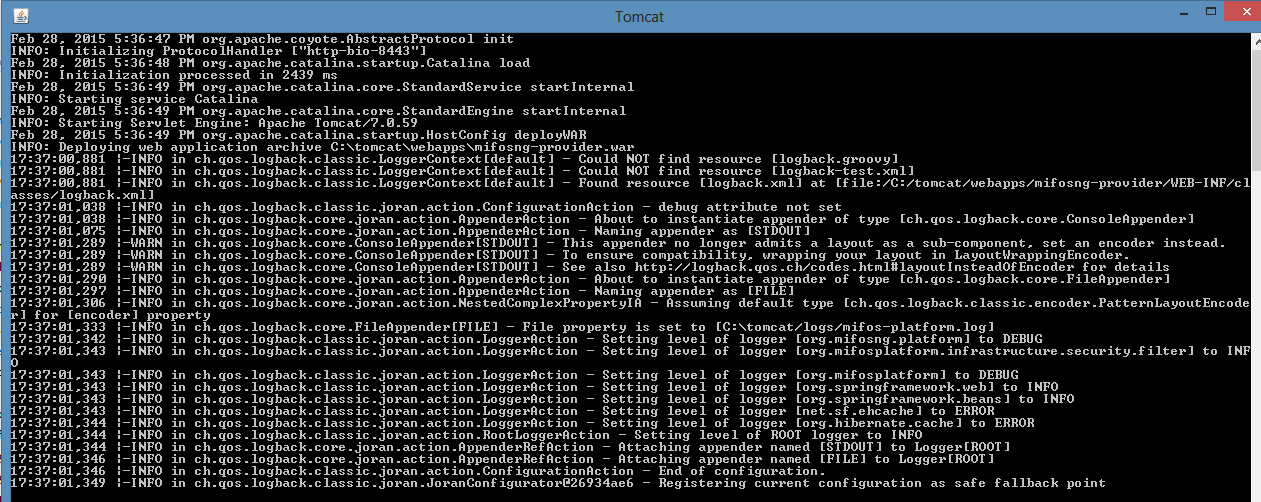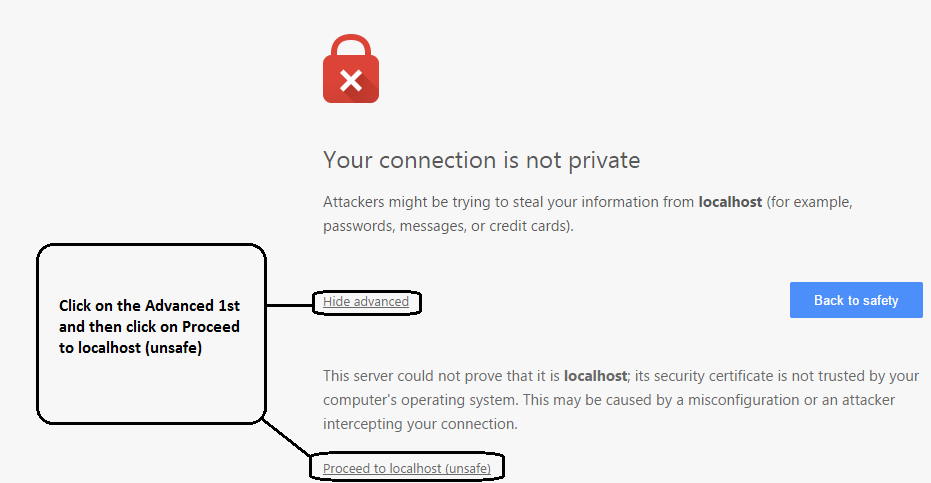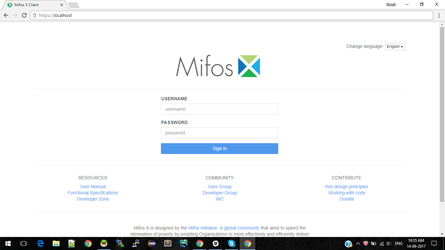(test)
Step-by-step guide
...
| Info | ||
|---|---|---|
| ||
To Install/Upgrade to the latest version of Mifos (21.07.01) Refer below document |
For a video guide click on the link below
|
|
Prerequisite Software
|
|---|
| |
|---|---|
1) Before beginning, uninstall any existing versions of Java currently on your computer. | 2) In your web browser, go to http://www.oracle.com/technetwork/java/javase/downloads/jdk8-downloads-2133151.html, to download JAVA 1.8. |
3) Oracle requires that you read the license agreement, then click the button labeled Accept License Agreement. | 4) Click the link to download the version for your system architecture i.e. Windows x86 for 32bit or Windows x64 for 64bit. |
5) Save the Java installation file to your computer | 6) Run and install the Java file. |
| |
|---|---|
1) In your web browser, go to http://dev.mysql.com/downloads/mysql/5.5.html#downloads to download MYSQL server v5.5. Click the link to download the version for your system architecture i.e. Windows x86 for 32bit or Windows x64 for 64bit. | 2) You can skip this option by clicking the link at the bottom of the page that says No thanks, just start my download.
|
3) Run the MySQL installation file. Click on the Typical button and then click on Next button.
| 4) During MySQL installation, use Advanced Configuration > Show Advanced Options and set the MySQL ROOT Password to mysql. Then click on the Save button. This will set your username to root and your password to mysql. |
| |
|---|---|
1) In your web browser, go to http://archive.apache.org/dist/tomcat/tomcat-7/v7.0.109/bin/apache-tomcat-7.0.109.zip to download Tomcat 7.0.109. This is downloaded as a folder >> Under the section Binary Distributions>>Core, click on the link 32-bit windows zip or 64-bit windows zip (depending on your system architecture) to download.
| 2) Extract the apache-tomcat-7.0.68.zip.
|
4) This is the folder once apache-tomcat-7.0.109 gets extracted: | 5) Copy and paste the apache-tomcat-7.0.68 folder to the c:\ drive, then rename it tomcat. |
| ||||||
|---|---|---|---|---|---|---|
1) Open your Environment Variables: | 2) Create the JAVA_HOME variable:
| |||||
3) Edit the PATH variable:
| 4) Create the JAVA_OPTS variable:
| |||||
| ||||||
|---|---|---|---|---|---|---|
1) Go to http://mifos.org/ from your web browser and navigate to Take Action >> Get Mifos | 2) Click on the "DOWNLOAD IT ON YOUR OWN" link | |||||
3) Click on "Download MifosX Now" | 4) Fill out the Mifos Download Form with your information, then click the Next Page button. The download will start automatically.
| |||||
5) You will automatically be redirected to a download page for Mifos on the Sourceforge website. Here you will be prompted to download a ZIP file containing the Mifos application.
| 6) Once you have download the Mifos ZIP file, extract it to a new folder on your computer. Remember this location, as you will need to refer to it later. | |||||
| |
|---|---|
1) Download HEIDISQL from http://www.heidisql.com/download.php and save the installation file to your computer. | 2) Run the Heidisql installation file and setup Heidisql: i) Click on local and enter the MySQL password (mysql) in the Password field. ii) Click on the Save button. iii) Click on the Open button. |
4) Copy the following database command and paste it into the large white box titled Query | 5) Click on the Run button to execute the query. |
6) In the heidisql menu bar, click on File>>Load SQL file... | 7) In the Load SQL file window:
Run the first-time-install script, by clicking Run Query button. Once it's successful close the heidisql application. |
| |||||||||||
|---|---|---|---|---|---|---|---|---|---|---|---|
1) Setting up the Lib folder a) Download the mysql jdbc 5.1.49 jar file from https://downloads.mysql.com/archives/get/p/3/file/mysql-connector-java-5.1.49.zip b) Once it's downloaded, copy the file and paste it to the Tomcat>>lib folder.
| 2) Generate keystore Generate a new keystore using the Java keytool : i) Open Command Prompt
| ||||||||||
3) Configure server.xml page, a) Go to tomcat>>conf, then right click on the server.xml file and select Open with>>Notepad: to reflect your system and settings: reflect the username and password used in step 4 of the Install MySQL section above (for e | <?xml version='1.0' encoding='utf-8'?> <GlobalNamingResources> <Resource type="javax.sql.DataSource" <Service name="Catalina"> <Connector protocol="org.apache.coyote.http11.Http11Protocol" <Engine name="Catalina" defaultHost="localhost"> <Realm className="org.apache.catalina.realm.LockOutRealm"> <Host name="localhost" appBase="webapps" unpackWARs="true" autoDeploy="true"> <Valve className="org.apache.catalina.valves.AccessLogValve" directory="logs" | ||||||||||
4) Save the modified server.xml page Press Ctrl + S or File>>Save. | 5) Close Notepad. | ||||||||||
| Info | ||
|---|---|---|
| ||
If your any of the server port connections are using port number 443, then you need to change your port number to 8443 in server.xml: port="443" maxThreads="200" scheme="https" to port="8443" maxThreads="200" scheme="https" |
| |
|---|---|
1) fineract-provider.war to tomcat>>webapps folder 1-a) Copy "fineract-provider.war" file from downloaded fineract-platform folder
|
1-b) Paste it to tomcat\webapps folder
|
2) Community-app to tomcat>>webapps folder 2-a) Copy "community-app" folder from downloaded Mifos-platform>>apps folder:
2-b) Paste it to tomcat\webapps | 2-c) Rename existing ROOT folder to OLDROOT under tomcat\webapps\ 2-d) Rename community-app folder to ROOT |
3) api-docs to tomcat>>webapps>>ROOT folder 3-a) Copy "api-docs" folder from downloaded Mifos-platform>>api-docs folder:
| 3-b) Paste it to tomcat\webapps\ROOT folder |
| |
|---|---|
1) Create .mifosx folder in home directory & paste Pentaho folder into it Use command prompt for creating .Mifos folder(make directory) i.e md .mifosx | 2) Copy PentahoReports folder from downloaded Mifos-platform folder |
3) Paste it to .mifosx folder
| |
| |
|---|---|
1) Go to "C:\tomcat\bin" folder, Run "startup.bat" by clicking it.
Note: You can create a shortcut of "startup.bat" on your desktop and rename it as start mifosx. | 2) Application gets started
|
3) Once server starts, will display as "Server startup in xxxxx ms"
| 4) You could access through any internet browser:- and if you are using server port number as 8443 then you could access it @ https://localhost:8443 |
5) For the first time access it will display as shown below, please click on proceed:-
| 6) Login into Mifos, Provide user name: mifos and password as: password
|
Stop Mifos X |
|---|
| You could stop by pressing ctrl+c key on tomcat server window & Mifos X gets stopped. |
| Info |
|---|
|
| Info | ||
|---|---|---|
| ||
If you need help on the Mifos Installation, you could always reach our partners:- Ex: https://mifos.org/directory/listing/intelligrow-consultancy-services-private-limited/ Welcome to Mifos community, If you are stuck with the Mifos Installation or need training or customization or need any help with respect to mifos please reach to us at: Sangamesh Nadagoudar, +91-9535891298 We would be happy to help you. |
Related articles
| Filter by label (Content by label) | ||||||||||||||||||||
|---|---|---|---|---|---|---|---|---|---|---|---|---|---|---|---|---|---|---|---|---|
|
